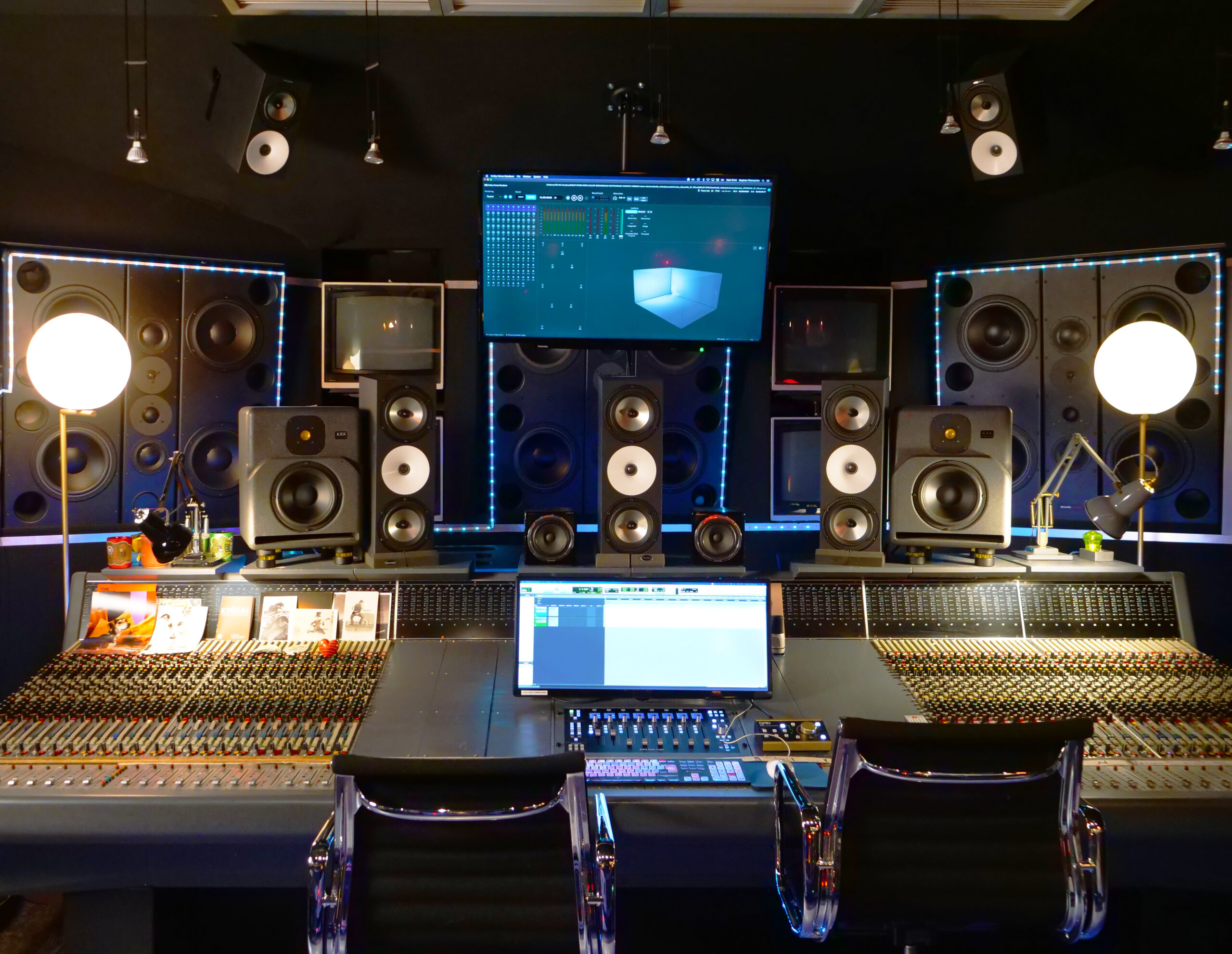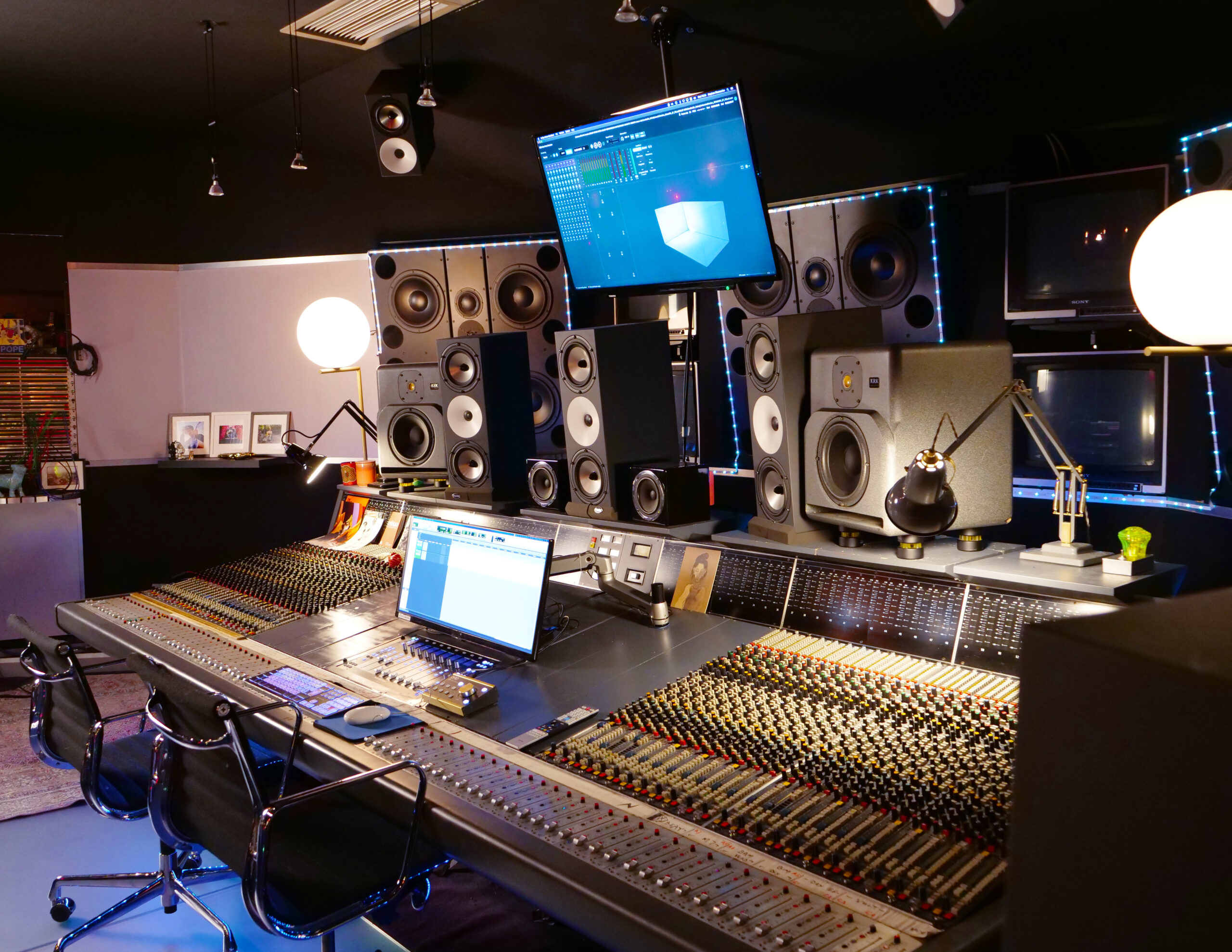
London based studio Pierce Entertainment has seamlessly upgraded its main studio to an Amphion based Dolby Atmos 7.1.4 mix environment. As home to award-winning producers and engineers, the management at Pierce Entertainment has been aware of Dolby Atmos and that labels were beginning to require the format alongside stereo mixes. The studio is especially suited for the format as the main room at Pierce Entertainment was initially built for 5.1 mixing and thus already sonically perfect for Dolby Atmos. Moving forward simply made sense and the room would quickly be put to the test on Sam Smith’s latest album “Gloria” as both the stereo and Dolby Atmos versions would be mixed by Steve Fitzmaurice at Pierce Entertainment.
To enable the studio’s flagship room for Dolby Atmos Pierce Entertainment decided on an Amphion monitoring system. Steve Fitzmaurice was already using his own pair of Amphions for his stereo mixing. He and the other engineers liked the speakers for their ability to mix quietly with no change to their tonality. Pierce then turned to HHB Communications to design and provide the integration necessary to upgrade the current system in addition to installing and commissioning the room.
Steve Fitzmaurice and Plamen Vasilev, both mixing engineers based at Pierce Entertainment, have a measured approach to working in this new format. Having dealt with other format trends the two spoke honestly about working in Dolby Atmos, its limitations, and for Steve what it has been like working on Sam Smith in Dolby Atmos.
“The stereo mix is still the priority, though with Dolby Atmos there is more freedom to get creative. Generally, my work in Dolby Atmos has tended to be more subtle, I don’t like to have too many objects flying around,” says Steve Fitzmaurice. “A positive aspect of mixing in Dolby Atmos is that as an engineer you don’t have the need to limit and compress as much as there is more room and space available to you. When I find there are two elements competing frequency wise for the same sonic space, I can simply move them to different areas within the Dolby Atmos environment.”
Plamen adds “I had mixed feelings when I first heard Dolby Atmos, but now I enjoy working in it. The format definitely requires a different approach than mixing in stereo. I am a fan of the subtle and clever ways of using all the space that Dolby Atmos provides. It’s still early days for Dolby Atmos to be the standard format, however, it is evolving in the right way in my opinion with every new update making it sound even more realistic and believable. As that technology keeps improving, I think Dolby Atmos has a great potential of being a driving tool in the music business.”

In addition to “Gloria”, Sam Smith’s latest studio album, Steve Fitzmaurice has also recorded and mixed an orchestral version of the global hit “Unholy” and mixed the recent “Sam Smith Live at the Royal Albert Hall” for the BBC. On both of these projects, Dolby Atmos shines as it allows listeners to have an audience like experience as Steve explains, “I recorded Unholy at Abbey Road as a live take, with a 16 piece choir and a 16 piece string section in addition to Sam. I set the musicians up in a “U” shape with Sam in the middle, and when I came to mix in Dolby Atmos, I panned and placed the tracks in the exact shape of the room, so the strings start to the extreme left behind you, come up around to the front, and then the choir goes from right to left from the front to the back, with Sam in the middle. When I was recording, I used several pairs of room mics and these mics are panned in Dolby Atmos position wise, as they were in the room.”
“I mixed ‘The Royal Albert Hall’ show in both stereo and Dolby Atmos, it was about twenty songs in total. I mixed it to picture, with the band mainly coming out of the left and right speakers. To me it doesn’t make sense if you are watching a band on screen to have any element of music coming behind and above you. However, a lot of audience mics were setup and recorded during the show, and I had a diagram showing me where these mics were placed, and during the Atmos mixing process, I recreated the placement. This gave the feeling for the listener that they are about a half way down the hall watching the band in front but surrounded by the audience.”
Studio Manager Meredith Bigwood had this to say about working with HHB Communications, “It was delightful working with HHB. They are obviously very knowledgeable about designing Dolby Atmos systems, once we had the initial conversation and site visit, the team quickly came up with a list of everything we’d need and provided practical advice on installation. Everything was so well prepared we were up and running very quickly. Their professionalism really helped the project to complete smoothly.”
HHB Communications CTO, John Johnson had this to say, “Early Dolby Atmos mixes were rarely mixed in the same room as the original let alone by the same person. There is more creative intent maintained by the artist, producer, mix, and mastering engineers actively working on both the Stereo and Dolby Atmos mixes. It was great to support the upgrades at Pierce Entertainment that enable Steve and the team to do just that in an accurate, tight-sounding studio with a great legacy.”


